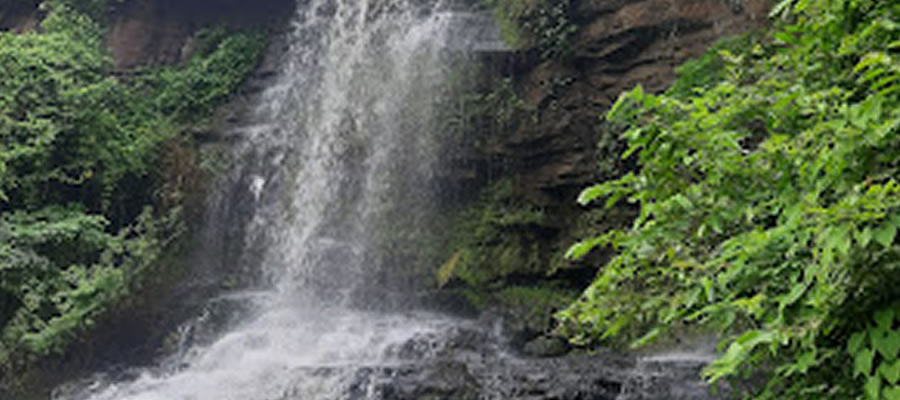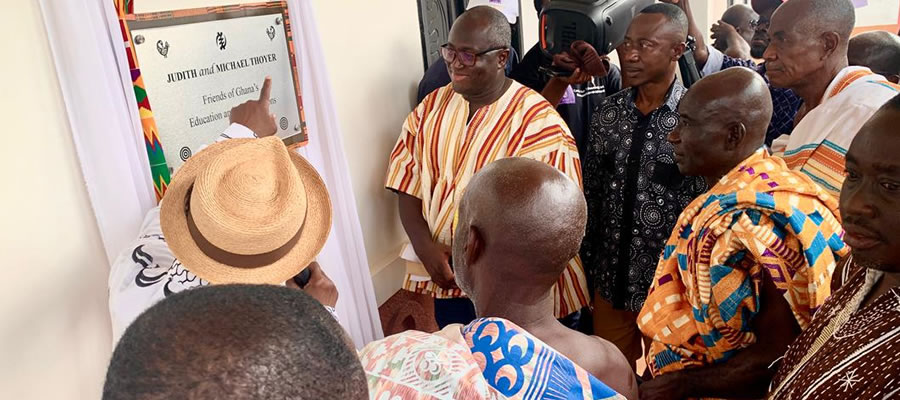

Culture of the People in the District
The culture of the people in the district could be viewed from different dimension that differentiates them from other people. This could be seen in terms of their dressing, the food they eat, language spoken, music and dance, art and craft, religious belief, occupation, administration and norms.
Language and Dressing
Close to 95 percent of the people in the district speak Asante-Twi. The remaining 5 percent of the people who are mainly migrants speak other languages in addition to the Asante language. Besides, the languages spokes, the people in the district can be identified by their dressing. The use of Kente is typical of the people during important occasion like festivals, outdooring etc.
Food, Music/Dance and Games
The cherished food of the people in the district is Fufu. Adowa, Kete, Nwomkoro are largely liked to the people. At funeral, festivals and other important occasions, the people dance to the Adowa, Kete and Nwomkoro. Dame and Oware are also patronized by the males both young and old ones, while ampe are also enjoyed by the females.
Chieftaincy and Inheritance
The supremacy of God among the people cannot be underestimated as far as the belief of the people is concerned. The people are incurably religious. This can be seen in daily lifestyles. In all important occasions, libations are pouring before the function. Chieftaincy is an institution practiced by the people; chiefs sit on stool, so they are enstooled or destooled. Matrilineal system of inheritance is what the people practices with few migrants farmers who also observe patrilineal system of inheritance.
Traditional Set Up
The district has only one Paramouncy which is in Kumawu. The paramount chief is the head of the traditional area and is known as “Omanhene”. The implementation of the laws on customs, taboos and setting of moral behavior are vested in him. Under the Omanhene are divisional chiefs. They assist the paramount chief in the performance of his duties. These sub-chiefs of divisional chiefs are Krontihene (chief’s deputy) Akwamuhene, Adontenhene, Nifahene, Benkumhene, Kyidomhene, Gyaasehene and Sanaahene.
Town/Village Chief
In the district, they are leaders of the various clans, lineages and family (Abusuapanin). They assist the town/village chief in performing his duties. They settle family disputes and are the custodians of family lands and properties.
The Queen Mother
The queen mother is one important figure when it comes to the traditional set up. She occupies next important office after the chief. Her authority is mainly limited to women. She wields greater power over the chief who is her son. She nominates a candidate to occupy the stool when it becomes vacant.
Attendants
The chief has many attendants who include linguist, drummers, horn blowers, umbrella carriers, executioners, gun bearers and a host of others.
Ethnic Diversity
At a glance, the district is quite homogenous in terms of ethnicity particularly in the southern part where the indigenous people (the Ashantis) and other Twi speaking Akans groups who are in the majority co-exist with the few Northern tribal groups like Dagabaas, Kotokolis, Fulani and others. In the northern part of the indigenous land owners, the Akan co-exist with the predominant migrant farmers mostly Moshies, kokombas and the krachies.
Communal Spirit
The communal spirit among the people manifest itself in corporate as well as in the individual level. For instance community members attend ceremonies like marriage, funeral and naming. Donations are usually made to help in the settlement of expenses that are incurred in organizing such ceremonies. Families like together in their family house and eat together. Communal work is done to either clean the environment of build schools, community duties for themselves. The “Nnoboa” system whereby farmers come together to help each other in turns is practiced in some communities in the district.
Festivals
The District has a great and historical festival called ‘Papa nantwi’ which is celebrated biennial in Kumawu. It is believed that, this festival came about as result of preparing men for war, where an animal (cow) are slaughtered and those who were strong would go and cut a piece. Those who will be able to cut a piece of the meat and survive the beatings would be deemed fit for war. This festival has come to stay and during the period people from far and near troop to Kumawu to witness the festival.
Apart from this, “Akwasidae” is also celebrated after every 40 days on the traditional calendar. Naming ceremonies, marriage and funerals are also important celebrations in the District. These celebrations are considered as a social responsibility and require the active participation of the people of the District.
Traditional Knowledge
The traditional about the people can be heard and expressed by listening to their myths, proverbs, names, saying, art, songs, poems and stories.
Myths, Proverbs and Names
Myths are short sacred stories of the people which explain the mysteries surrounding their concepts like ceremonies, festivals, origin of things like death, creation, procreation. Proverbs on their hands, are short with saying when express truths and moral lessons. Names are identified marks of the people which humanize children. Every name given to a child has meaning and has an impact on the child.
Sayings of the people in the district are expressed in maxims. Experienced old people come out with compositions which give expressions to what are deep within them and actually control their actions. People in the district have a lot of artistic impressions or symbols that tell a lot about their traditional knowledge. Some of these symbols are “Gye Nyame”, “Sankofa”, etc.
Poem and Stories
Poem and stories are usually told during certain ceremonies by the people in the communities. These poems and stories talk a lot of about their traditional Knowledge and throws challenge to people to be serious in life.
Attitude and Practices
Some of the attitudes and cultural practices in the district include libation, Belief in the potency of demons, witches, and gods, Ancestral worship, marriage ceremonies, naming ceremonies, funeral etc. All these attitudes and cultural practices go long way in shaping the lifestyle of people in the district.
Community Participation
The people’s participation in all activities relating to their beliefs and cultural practices has on a positive note. Participation in all kinds of activities like naming and marriage ceremonies, burial, funerals etc. are considered as a social responsibility, which should not be frowned upon.
Positive Cultural Practices that Promote Development
“Papa Nantwi” festival in Kumawu is a great and historical heritage that can be developed for both domestic and international tourism to help promote development. During this festivals people from far and near troop to Kumawu to witness the festival.
Negative Cultural Practices that Hamper Development
Chieftaincy disputes in some selected communities in the district hampers development. For example protracted chieftaincy dispute at Kumawu has not helped the district as a whole because it is only one Paramouncy in the district.
Date Created : 11/28/2017 3:20:04 AM











 facebook
facebook
 twitter
twitter
 Youtube
Youtube
 +233 593 831 280
+233 593 831 280 0800 430 430
0800 430 430 GPS: GE-231-4383
GPS: GE-231-4383 info@ghanadistricts.com
info@ghanadistricts.com Box GP1044, Accra, Ghana
Box GP1044, Accra, Ghana